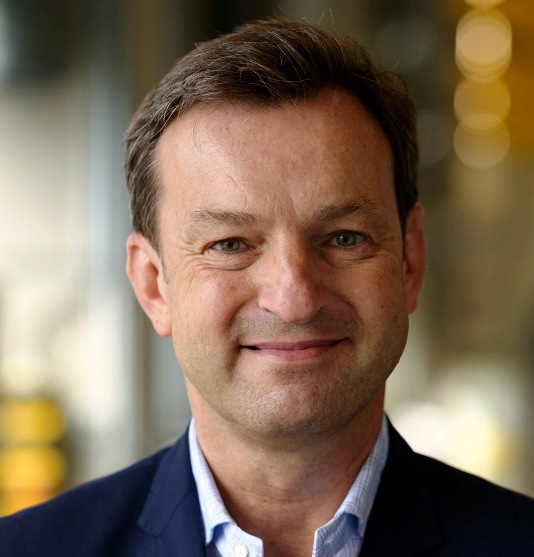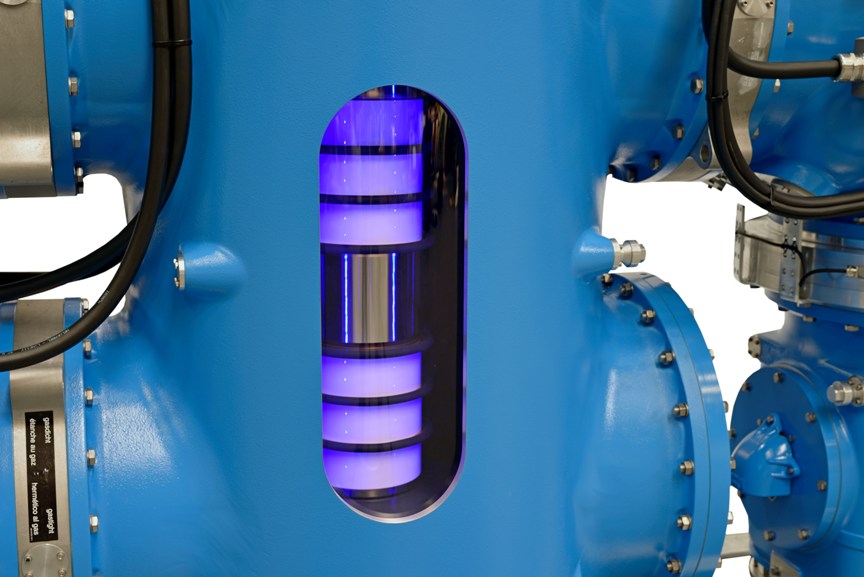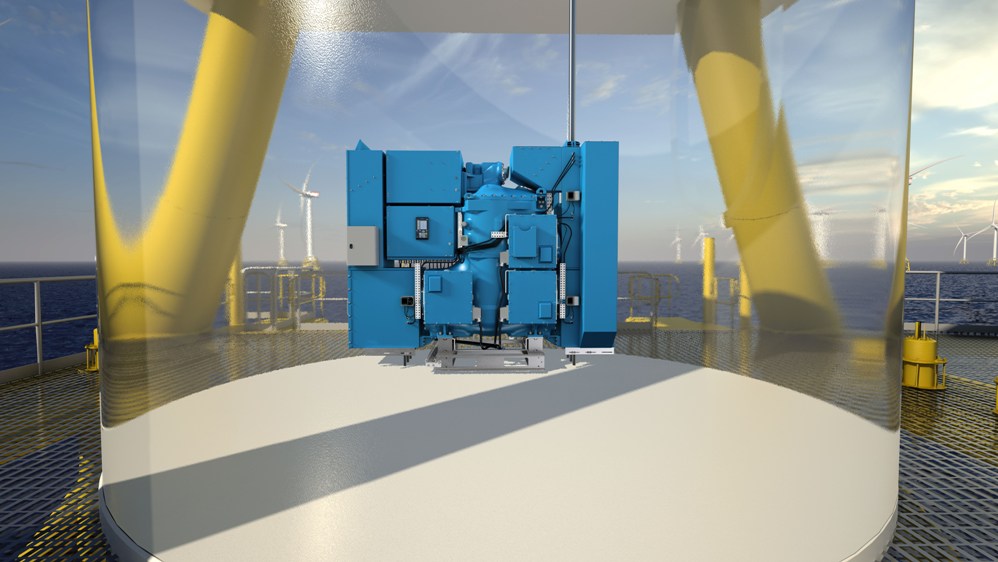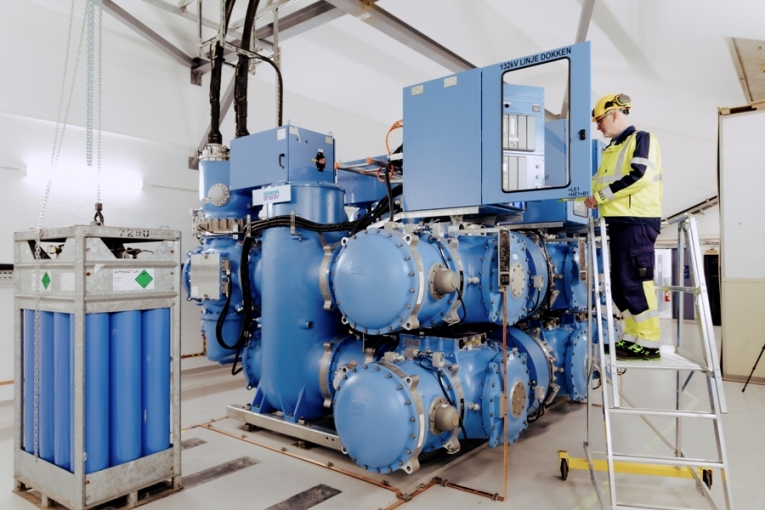
As the world moves towards zero CO2 emissions, it has become imperative to consider alternatives to SF6 – the most popular gas insulating medium used in high-voltage electrical equipment, which unfortunately has a proven adverse impact on the environment. Siemens Energy is leading the front in successfully developing switchgear using greener alternatives like vacuum or clean air. In this exclusive interview, we have Dr. Mark Kuschel, Senior Key Expert for SF6 Alternatives, Siemens Energy, giving keen insights into the SF6 ecosystem, and explaining how Siemens Energy’s “Blue portfolio” is an important step towards a world free of fluorinated gases. An interview by Venugopal Pillai.
Let us first understand the detrimental effects of SF6 on the environment. When did SF6 come into the picture and what was used before its advent?
Until the 1960s, oil was used as an arc-quenching media for high-voltage circuit breakers in substations around the world. However, it had a variety of disadvantages, like fire risk and maintenance intensity. When sulfur hexafluoride (SF6) was implemented, it was the best alternative for arc-quenching and insulation, and it improved the performance and safety of high-voltage applications.
With the higher awareness of global warming and technological progress the development of SF6 alternatives based on arc quenching in vacuum and air insulation were focused with zero CO2 emissions and are now available and successfully proven in networks up to 145kV. For voltages higher than 145kV, alternatives still need to be developed using alternative insulation and arc-quenching technologies. Today, SF6 is still the most commonly used solution in the field of gas-insulated high-voltage equipment.
What are the typical equipments in which SF6 is currently being used? What are the advantages of SF6, its adverse effects notwithstanding?
There are several application areas for SF6. It’s used in the manufacture of electronics, aluminum, and magnesium and in electrical equipment like circuit breakers and switchgear. SF6 is used in electrical equipment because of its outstanding technical performance in terms of dielectrical strength and arc-quenching capabilities.
Also read: Global Giants GE And Hitachi ABB Power Grids Join Hands Towards SF6 Mitigation
Despite the worldwide pressure on reducing the use of SF6, it will still take some time before safer alternatives completely take over. Till then, can we presume that the SF6 currently present in electrical equipment is being handled carefully in terms of leakage control, recycling, etc?
The good news is that thanks to state-of-the-art technology, it’s now possible to keep the leakage rate of switchgear below 0.1 per cent per year. All system engineers are also sensitized to and trained in the careful handling of switchgear components containing SF6. And along with reducing SF6 in today’s gas-insulated switchgear, we’ve also developed alternatives with zero global-warming potential that use clean air insulation.

We understand that “clean air” is an ecologically friendly alternative to SF6. What is “clean air”? Is it that conventional electrical equipment needs to be redesigned in order to make it amenable to clean air?
Clean air (sometimes also called “dry air”) is technically processed and purified air consisting of 80 per cent nitrogen and 20 per cent oxygen. Just like the air around us, it has zero greenhouse gas potential and is completely harmless to health and the environment. Clean air is used to insulate current-carrying conductors inside housings: for example, in air-insulated instrument transformers, circuit breakers, and gas-insulated switchgear. It replaces SF6 as an insulation medium, eliminating the need for special measures like the careful handling, recycling, and reporting required by law when using SF6 and other F-gases in some parts of the world. Clean air is also used as an insulation medium for circuit-breakers based on vacuum-interruption technology. The use of both new technologies makes a new product development necessary.
We understand that Siemens Energy has developed a “Blue portfolio” comprising power transmission equipment that is free from fluorinated gases. What are current constituents of the Blue portfolio?
The Blue portfolio already includes high-voltage switching products up to a voltage level of 145kV, including Live Tank and Dead Tank circuit breakers, gas-insulated switchgear (GIS), instrument transformers, and gas-insulated bus ducts (up to 420kV). Instead of using F-gases, the products in the Blue portfolio use vacuum interrupters and clean air.
The technology is also a game-changer for offshore wind power, because F-gas-free GIS for wind turbines offer yet another way to make wind power generation even cleaner. We’ve already delivered hundreds of 72.5kV GIS bays for wind tower applications, and we’ll soon deliver our one-thousandth bay. More than 200 units are already in operation. In addition to GIS, we’ve delivered hundreds of Blue Live Tank circuit breakers and instrument transformers to customers. Meanwhile we have more than 700 units successfully in operation and more 1,900 units contracted to be delivered and energized in the upcoming months.

What are Siemens Energy’s plans to widen the Blue portfolio?
The Blue portfolio is undergoing rapid development. In June 2021, we completed the successful type test of the world’s first F-gas-free 123kV Dead Tank circuit breaker. In the coming years we plan to achieve a new milestone every year by scaling the technology to higher voltage levels. Eliminating SF6 and other F-gases in our solutions will make a contribution to arresting climate change. Given the net-zero target that’s been embraced worldwide to minimize climate change, we believe that F-gases will be completely phased out for power T&D equipment. We’re aiming to sell only F-gas-free high-voltage switching technology beginning in 2030 at the latest.
Is there any technical downside on the use of “clean air” as opposed to SF6 in electrical equipment?
There are no technical downsides and there are lots of benefits, including being superior switching technology for vacuum-interrupter tubes with extended short-circuit capabilities up to 30 times and a rated current of 10,000 instead of 6,000. Aside from the ecological aspects, grid operators also need to consider economic and safety issues. The current review of F-gas regulations, like the one ongoing in the European Union, is expected to lead to new legislation or even the banning of this insulation gas in the near future. The use of fluorinated gases requires monitoring, reporting, and other costly efforts. In addition, the handling of the gas calls for special safety measures. Reducing its use to zero by using clean air makes operations and maintenance easier, safer, more cost-efficient, and future-proof. Therefore, clean air is the best technology for the future of non-toxic zero-emission power grids.
With the level of technology already achieved today, the disadvantage of the weaker dielectric strength of clean air compared to SF6 is not of practical significance. When used with innovative digital measurement technology, F-gas-free switching products have a comparable footprint to our SF6-insulated predecessors, and they’re even smaller in size than the gas-insulated switchgear developed at end of the 1990s.
“Disposal of F-gases is often more expensive than the price of new gas.”
Hypothetically, in the distant future, when “clean air” has replaced SF6 universally, what happens of the SF6 lying in decommissioned equipment?
F-gases aren’t allowed to be released in the atmosphere and need to be evacuated to send back to the gas manufacturers. The gas manufactures can dispose of it properly by incinerating it. Its disposal is often more expensive than the price of new gas. Clean air has the advantage that it can be released into the atmosphere, and it’s not subject to gas regulation—today or in future.
We understand that by 2030, Siemens Energy intends to go completely free of F-gases. What are your specific plans for India, in terms of producing F-gas-free equipment?
Siemens Energy aims to become climate-neutral everywhere in the world including India. The comprehensive reduction of SF6 in power transmission is a path that we must naturally follow together with our customers. In the long term we need to consider converting our plants to the production of exclusively F-gas-free equipment.
Also read: Siemens Energy Plans New Facility For Vacuum Interrupters At Berlin
Apart from SF6-free equipment, what other eco-friendly measures is Siemens Energy taking in power transmission equipment? For instance, we hear of ester oil-filled transformers.
Siemens Energy recognized early on that energy transmission and distribution will be a major part of a successful energy transformation, and so we began to develop technologies that are actively shaping the path to a climate-friendly future – and that are also sustainable, affordable, and reliable. We’ve created a variety of alternatives that foster the transition to environmentally conscious power transmission with reduced greenhouse gases, like the Blue portfolio. Natural ester-filled transformers are another great example: for centuries, power and distribution transformers were filled with mineral oil for electrical insulation and cooling. Siemens Energy has been one of the first transformer manufacturers to use natural or synthetic esters instead of mineral oil. These biodegradable ester fluids are environmentally friendly, which makes them the first choice for places where high environmental standards are required, such as offshore wind platforms. In addition, ester fluids are extremely safe in terms of fire prevention due to their high flame and flash points; and today they also meet cold-temperature environment specifications.

We recall that the order for the world’s first-ever SF6-free GIS was placed with Siemens Energy, destined for Norway. Tell us more on this order. How is the equipment faring today?
BKK Nett, Norway’s second-largest power grid owner, became the first to commission a GIS for 145kV. BKK Nett’s decision was influenced by another advanced project that provided renewable energy to cruise ships in Bergen Port. The goal was to deliver a 100 per cent sustainable solution that wouldn’t compromise health or increase global warming. To provide the necessary grid infrastructure for this project, BKK Nett also had to upgrade its Koengen substation, and the decision was made for a Blue GIS, which is now operating successfully with zero emission. Other utilities in Norway and worldwide later followed the company’s example.
“The Blue portfolio is already making available the requisite technologies with a zero global warming potential, and other technologies are proactively in development. The biggest challenge is time.”
What challenges, if any, do you see in Siemens Energy’s journey towards F-gas-free equipment by 2030 as envisioned?
We need to walk the path toward climate-neutral and zero-emission power transmission alongside our customers. Some are just starting to acquire experience with the technology, and others already have a plan to phase out the use of SF6. The Blue portfolio is already making available the requisite technologies with a zero global warming potential, and other technologies are proactively in development. The biggest challenge is time.
The European Commission is currently working to revise the regulation on fluorinated greenhouse gases, and it’s expected to significantly restrict the use of new SF6-insulated equipment. We can see a similar or even faster rate of change in the U.S. with regulations from the CARB (California Air Resources Board) and the EPA (Environmental Protection Agency). Our customers worldwide have already set carbon neutrality as one of their goals. This development isn’t just occurring in Europe and the U.S.: We also see customers following this trend in regions like Asia.
In this context, we recently decided to invest over €60 million in a new production facility in Berlin. In the future, vacuum interrupters – the technological core of our Blue portfolio – will be manufactured in the company’s switchgear plant in its 6,200 sqm of space. The new manufacturing facility is scheduled to go into operation in 2023.


